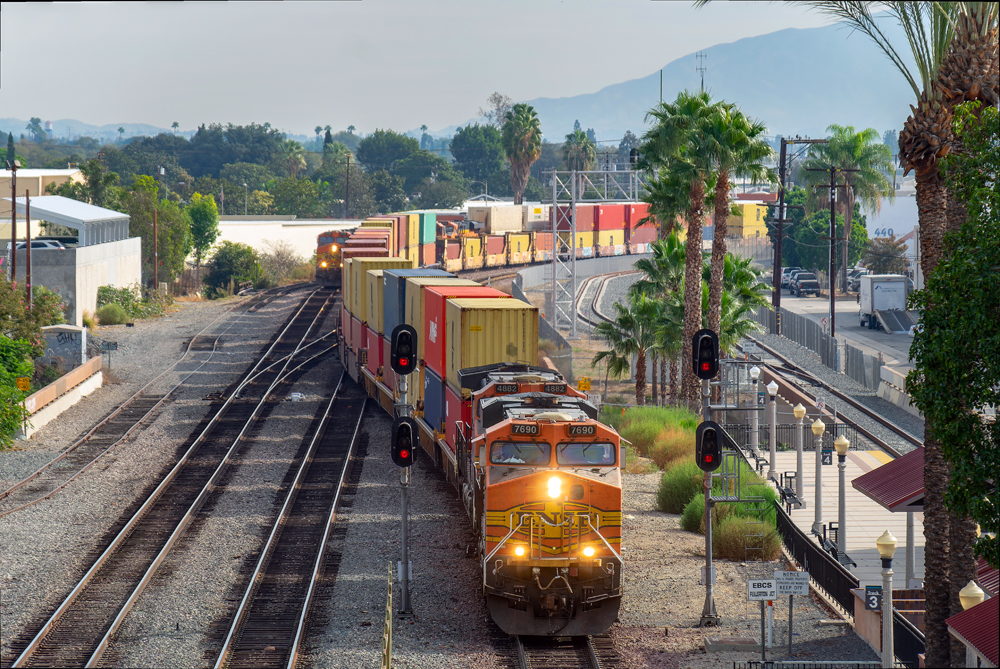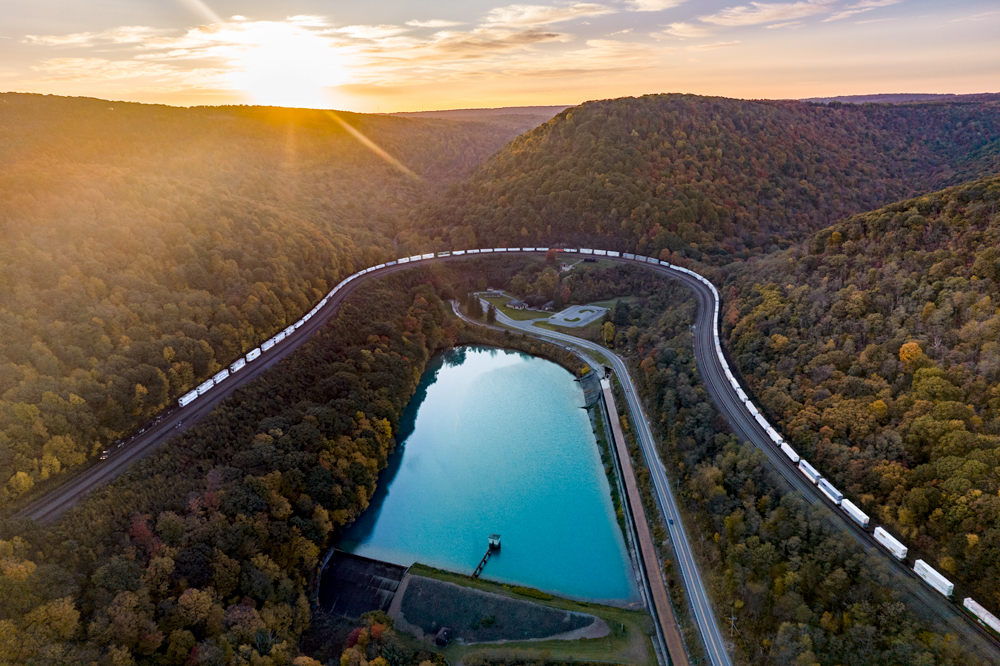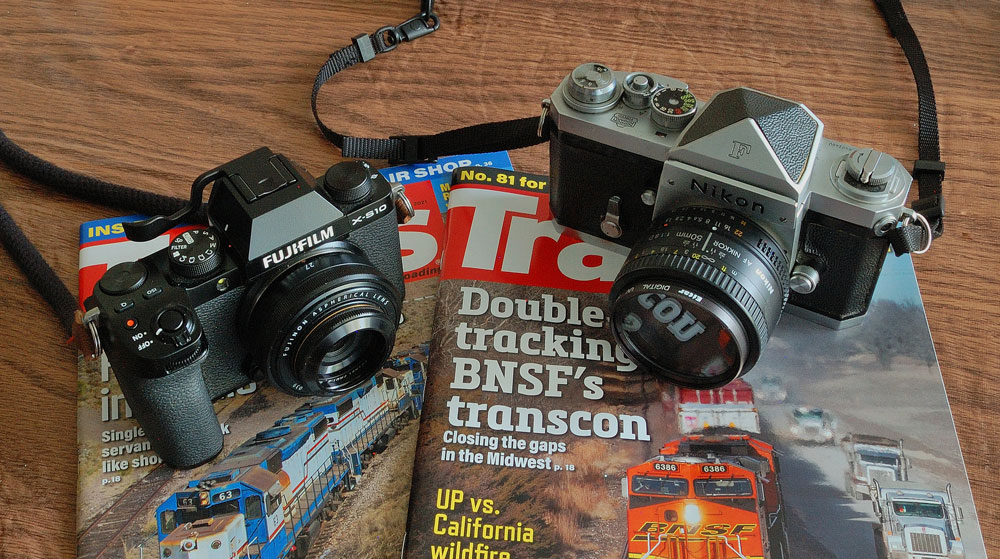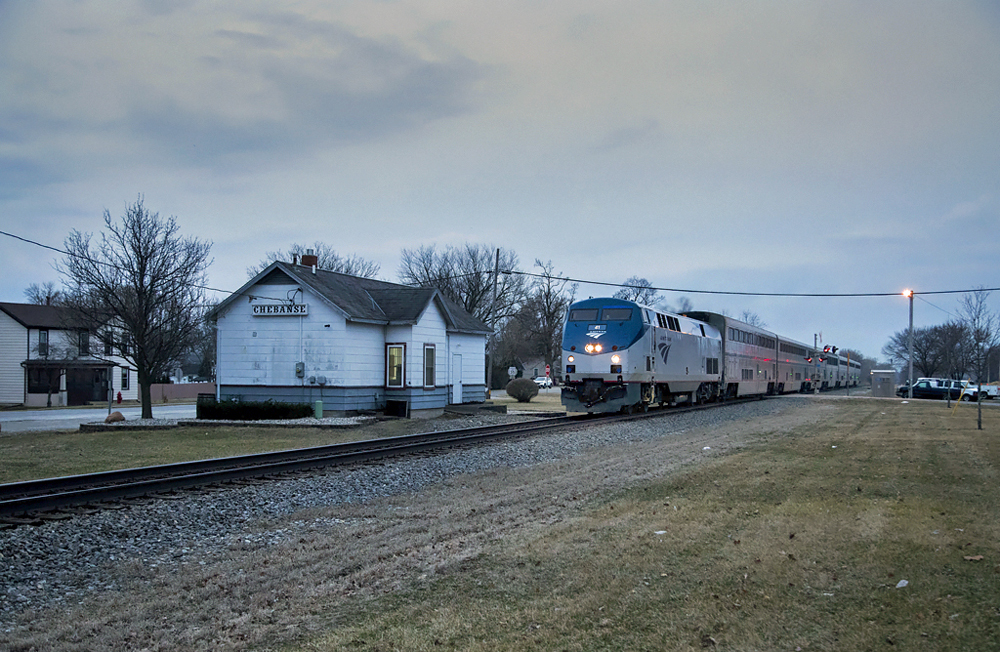Photographer John Crisanti
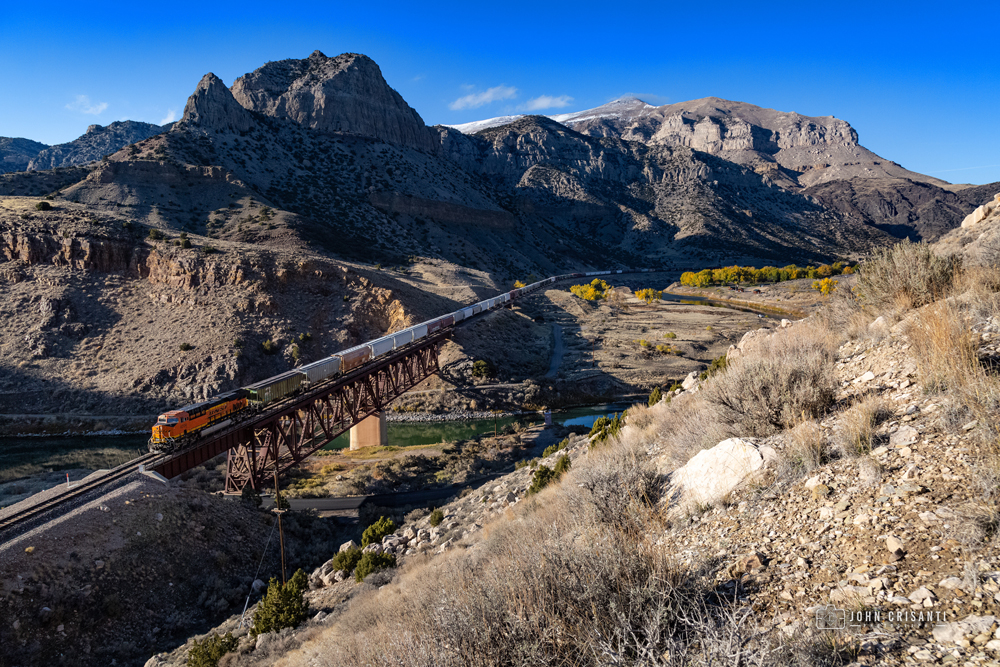
John Crisanti is a railroader, photographer, and model railroader residing on Colorado’s Front Range. His creative use of light, weather, and wide-angle allows him to capture dramatic scenes of everyday freight.
His interest in rail photography does extend beyond The Centennial State. Crisanti recently shared (with Trains) the story of going off-the-grid in Wyoming’s Big Horn Mountains, surrounded by an abundance of natural beauty — yet far fewer trains — in hopes of getting the shot.
“My eyes would be on Northern Wyoming, tucked up against the Big Horn Mountains. I had two main areas of focus for this upcoming trip: BNSF Railway’s Big Horn and Casper subdivisions, particularly the Wind River Canyon. The Big Horn Subdivision was not a big challenge because train traffic was much denser than the Casper Subdivision,” he says.
Crisanti says the Casper Subdivision has breathtaking scenery, but only sees two or three trains per day.
“The biggest takeaway from visiting this part of the BNSF rail network is a high-risk, high-reward motif.”
“After spending a couple of days and having driven over a few hundred miles in the books, it was time to enter dark territory, figuratively and literally. While the Big Horn Subdivision is busy with Centralized Traffic Control (CTC) signals, the Casper Subdivision is dark with Track Warrant Control (TWC),” he says reflecting on the cool and crisp Fall morning when he left his Sheridan hotel before dawn.
After a short drive down Interstate 90 to Buffalo, Wyo., Crisanti turned on U.S. Highway 16 and entered uncharted territory. The sun had not yet risen and a light fog hindered visibility, but as Crisanti gained elevation and entered a clearing, the rugged landscape came into view, enhanced by a light snowfall. He recalls the air getting cooler and thinner, though his primary concerns were icy patches on the roadway.
A few miles later he reached Meadowlark Lake and the spectacular Tensleep Canyon. From there, it was a straight jaunt to his first stop at Worland, Wyo., where U.S. Highway 16 ends and U.S. Highway 20 parallels the Casper Subdivision. He would continue following the line south hoping to intercept a train.
After about 15 miles, a crackle on the scanner suggested good news as he entered the town of Kirby, Wyo., which confirmed a BNSF local from Greybull was switching in town. Opportunistically, Crisanti had hoped this train would venture south into Wind River Canyon, but unfortunately, it only went as far as Thermopolis, Wyo., north of the Wind River Canyon, where Crisanti would overnight.
Through mid-afternoon, there were no trains in the canyon and Crisanti decided to check-in to the hotel early and scout the railroad.
“After settling in, I took some time to explore the town and see where the railroad tracks were situated. While doing so, I was aware of a southbound manifest train coming. Due to the geography, the Wind River Canyon is best photographed in the morning. However, knowing how much train traffic is on this route, it was time to break some rules. And as a photographer, rules are meant to be broken,” he emphasizes.
“When the southbound BNSF train showed up, the canyon was shrouded in shadows from the walls, which resulted in tricky light metering as the foreground, background, and sky were at all different exposures, and it would be almost impossible to isolate one parameter from the other,” he says.
“This train would be my first but maybe my last train. I had no idea where every photo location was, so it was a ‘let’s wing it’ situation. As luck would have it, the slide fence in the canyon was out of service, so trains would have to creep through the canyon, being on the lookout for possible rock slides. I took advantage of this and could photograph enough locations to have something in the bag.”
Crisanti says there were two locations he wanted to shoot. First would be the canyon’s twin tunnels and the second being a trestle spanning Wid River at the south end of the canyon.
“My goal was accomplished by checking off both locations with the same train,” he says.
“After grabbing a delicious dinner back in Thermopolis, I was more than satisfied and would be content with that being the only train I saw.”
But the following day had more to offer.
“I learned that the BNSF local would travel through the canyon, and another BNSF manifest train would also be running. As the saying goes, ‘the stars aligned,’” he says.
The day’s first train was the BNSF local with a handful of carloads for Bonneville, Wyo. Its early run through the canyon had not yet allowed the sun to fully illuminate the canyon’s floor, so after bagging a few photos, Crisanti returned north to Thermopolis to wait out the southbound manifest and allow time for more of the canyon to be illuminated.
“About two hours later, the next train arrived, and the last chase was on. The train itself was perfect. It had three locomotives, and it was a healthy-sized train — the perfect combination for the spectacle of the canyon,” he says and a great way to close the book on the trip. A few hours later Cristani would return home to Colorado.
“While it only lasted four days, it was one of the best four days I have had trackside as a railfan and photographer. I clocked in almost a thousand miles during those four days. Would you say that there is a moral to this story? Yes, there is. You can plan a trip down to the nitty gritty, but in the end, it is all about luck.”
Crisanti’s photos can be found online at Flickr.
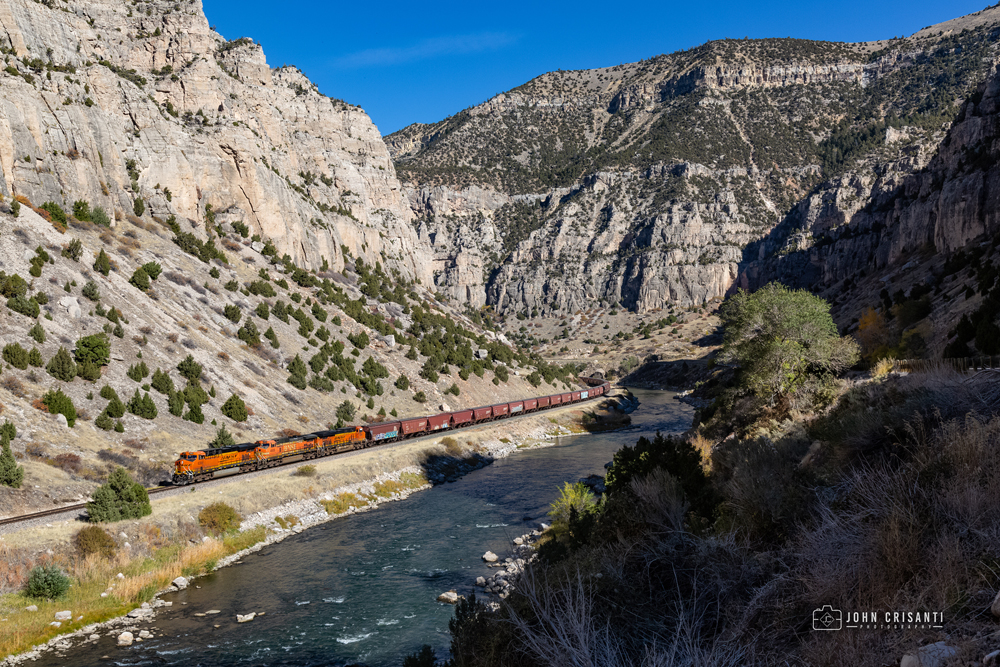
Getting the shot is a series of Trains.com articles highlighting the travels of individuals who go above and beyond to capture great railroad images, like hiking several miles for the perfect overlook, or driving hours out of the way in search of something special. If you have a similar experience trackside and want to share your story, please send it to chase.gunnoe@outlook.com. Please be sure your story includes photographing trains from a safe distance and does not involve trespassing on railroad property.






